Post RMAF: A Vendor’s Perspective Part I
On the Tuesday morning after having a gluten free breakfast with my cousin in Grand Junction, Colorado, I looked at the maps app on my iPhone as I tanked up my 2004 Acura TL and realized home was only 807 miles away! According to the estimated time of arrival, I would arrive at about 8:30 (thanks to a time change) and be able to see my border collie Charlie without having to wait another day. So I went for it. With a couple of fill ups and some thoroughly unhealthy road food, I sped along a very familiar portion of the U.S. interstate system and made it home in a single day. I haven’t driven that far since I was a much younger man. Although it helps now that the speed limit in Utah was 80 mph.
I hadn’t been to the Rocky Mountain Audio Fest in a few years. One year it conflicted with the AES Show in New York and another I was tied up at home dealing with some medical stuff. But this fall I’m on sabbatical from the university. So I signed up for a table in the marketplace (no more demo rooms — too expensive and not enough benefit), loaded up my car with 5 boxes of the Music and Audio: A User Guide to Better Sound book, stuffed a suitcase with a couple of copies of each album in the AIX Records catalog, and took the southern route through the four corners to Denver.
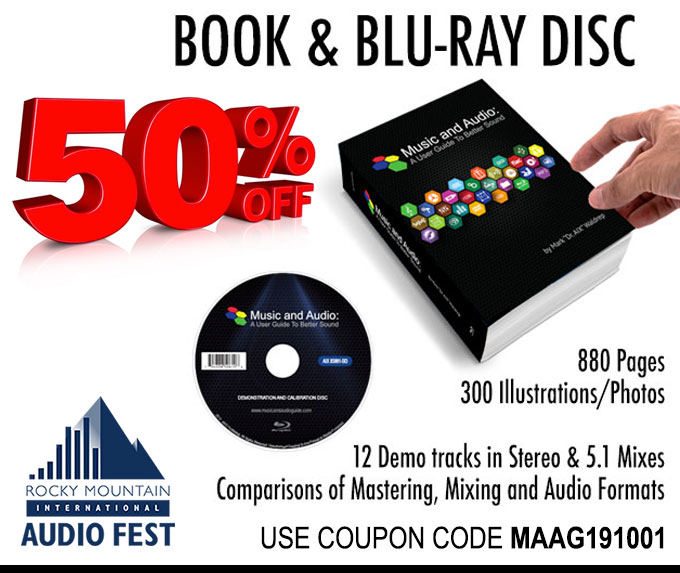
The new venue for the RMAF is the Gaylord Rocky Mountain Hotel and Convention Center, a combination multi-floor hotel and adjacent series of interconnected, huge ballrooms laid out on what was previously ranch land. It opened in January and is conveniently located very close to the Denver International Airport. The amount of new construction happening in the area is amazing…new houses, schools, hotels, fast food joints, and restaurants. I know this part of the country and can remember looking down at the open countryside as I landed at Stapleton airport on my way to ski country or my sister’s place in Boulder. I driven through to Denver from Michigan many times too.
After getting my exhibitor badge I made my way to the Colorado “C” ballroom to check out the AIX Records 10×10 space. Having arrived later than most of the other vendors, I noticed that my three tables were pushed together into a contiguous flat surface with no room for a human to stand behind them. It turned out that the layout promised in the online RMAF diagram was not properly measured and wasn’t going to accommodate two 10×10 foot areas side by side — and the entire room was already full. I went looking for a new home for AIX Records and the Music and Audio Guide. And I found it just inside the doorway of Colorado Ballroom “A”, otherwise know as Head Space — a much larger ballroom for headphones, personal audio, DACs, cables, tweaks, and even a vendor offering facial makeovers. My neighbors included Astell & Kern and Benchmark Media.
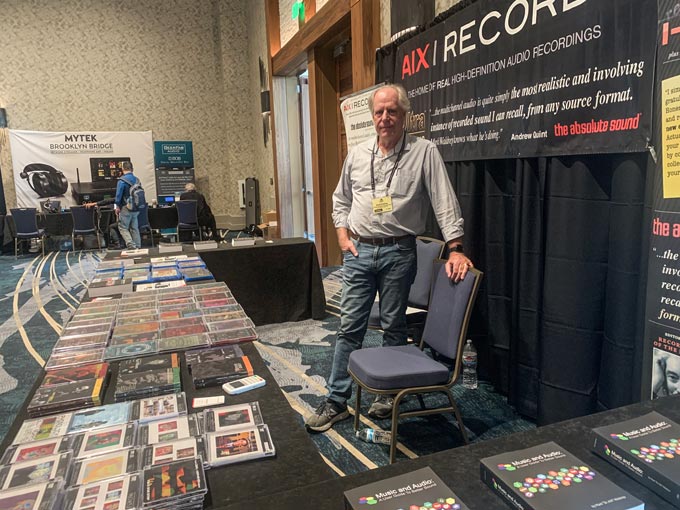
The distances that attendees had to walk to get from the marketplace and dedicated demo rooms to the hotel rooms, which housed smaller systems, had to be miles. Just walking from the rear parking area through the lengthy hallways to the Colorado “A”, standing there all day, and walking out the end of the day clocked over 2 miles on my trusty Garmin runner’s watch. People definitely got their exercise at the 2019 RMAF. Many complained that the venue was much too large for the event. The registration table (which had a line backed up for over an hour) was located at the opposite end of the convention center. I never made it to the hotel demo rooms but did manage to venture out to the local demo rooms on Sunday afternoon.
Appropriating the Hi-Res Logo: Qobuz “Buys” In
Over the course of three days, I had a number of interesting conversations with other vendors, attendees, and a few members of the press. While I was talking to someone at my table prior to the opening of the show on Friday morning, the topic of the hi-res audio logo came up because it was plastered on the Qobuz banners throughout the show. I pointed out that the logo had no relevance for the services offered by Qobuz since it applies exclusively to hardware as specified in the JAS (Japan Audio Society) specification. The Qobuz representative setting up just a few yards away overheard me and responded that they “paid the $200 requested by the JAS” and therefore couple use the logo any way they wanted. So much for maintaining a set of standards for branding and logo use. What they really should be using is the Hi-Res Music logo but it’s graphically unattractive and not nearly as familiar. Funny that their banner talks about “Hi-Res Music” but uses the “Hi-Res Audio” logo…confusion continues.
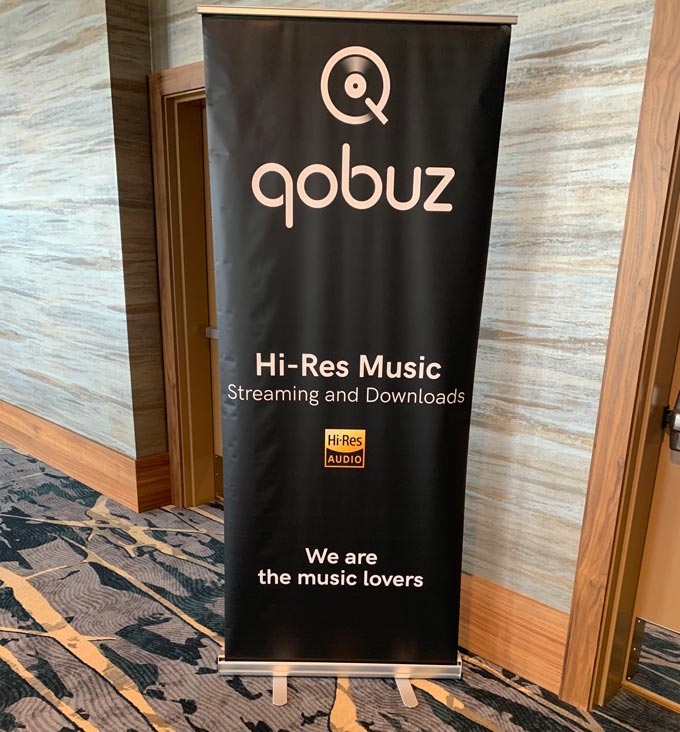
Not to mention the fact that virtually all of Qobuz downloads and streaming aren’t actually high-resolution. The labels supplying the content are providing standard-resolution audio. But if it’s delivered in a “hi-res” digital container, than it must be hi-res, right?
New Audio Books – “To Feel the Music”
I heard from Carlo La Rosa of Secrets of Home Theater about the new book on high-end audio by Neil Young and Phil Baker titled, “To Feel the Music: A Songwriter’s Quest to Save High-Quality Audio”. Interestingly, I was invited by Phil after a brief meeting outside of San Diego on my way back from a day working on the YARRA 3DX to review some of the material in the book. He asked if I would be willing to review and comment on the content thus far. Phil sent me a couple of chapters and asked if I would be kind enough to read and edit them. Once I started to dig into what was provided, I responded to Phil and told him that I would have to rewrite large portions of the text to correct obvious factual errors. He passed on my suggestions, thanked me and proceeded as they originally planned. It will be interesting to read when actually made it into the book.
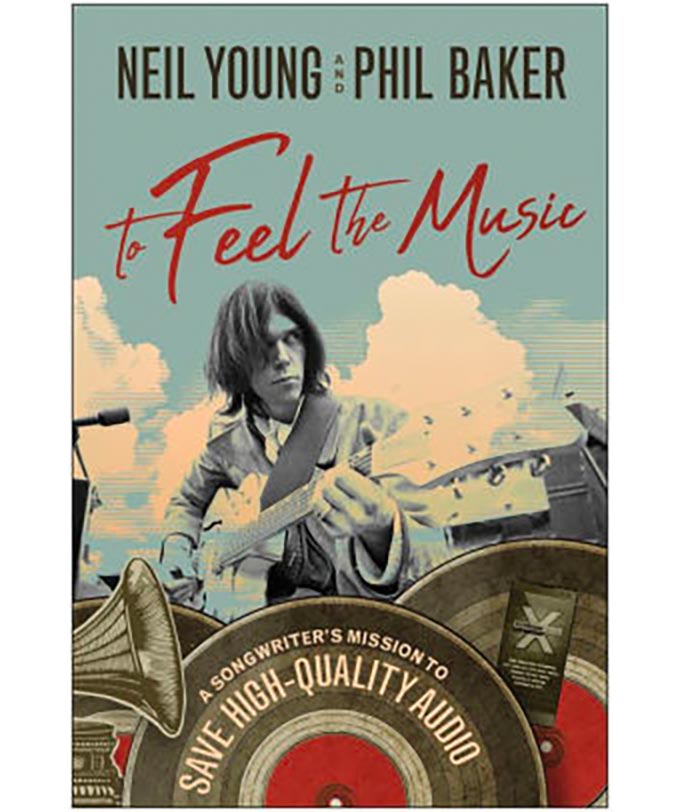
I applaud Neil for his lifelong commitment for higher fidelity but it’s important to do so from a fact based perspective. Sadly, a lot of the information he spouts is incorrect. I guess celebrity affords you the option to ignore basic science and accepted principals of technology.
A User Guide to Streaming, Downloads and Personal Audio
After walking the Head Space ballroom, reading numerous articles on hi-res streaming and downloads, I’ve decided the audiophile world needs a comprehensive book on these new developments. With typical streamers promoting 384 kHz/32-bit audio and MQA forcing their way into radio and web broadcasting to the exclusion of unprocessed and DRM-free audio, it’s time to write another book — although I promise it will be less than the 880 pages in the Music and Audio Guide and weigh less than 4 pounds. The current plan is for a book of several hundred pages. There may even be a disc included…I’ll have to wait and see if one is necessary.
I’ve started preparing the table of contents, doing the initial research, acquiring a few systems, and speaking with friends in the audio business about streaming etc. You might think that Sony’s LDAC codec offers high-resolution streaming or that DSEE can restore all of the missing partials in an otherwise lossy compressed file, but you would be incorrect. There is so much to understand and consider as audiophiles, the music industry, and consumer electronics manufacturers grabble with the move away from physical media and high-fidelity formats and move to cloud-based, compressed files and home networked delivery. These new areas of our hobby will become more and more important as we opt for convenience over fidelity. The question is can we have both?
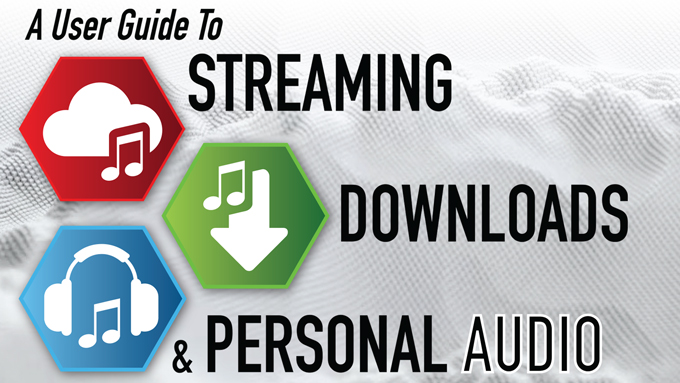
A User Guide to Streaming, Downloads & Personal Audio will be launched on the Kickstarter platform in the near future. The first order of business is to evaluate whether there is sufficient demand for a book on these topics. I’ve set up a website landing page at SDPAGuide.com where you can leave your name and email address. I will issuing regular updates about this new project and hope that you find it as compelling as I do. I’ve begun working on a website for the new book as well.
Feel free to comment here or write to me with your thoughts or if there are specific areas you want me to address. The goal is to have the book finished in about 12 months or earlier.

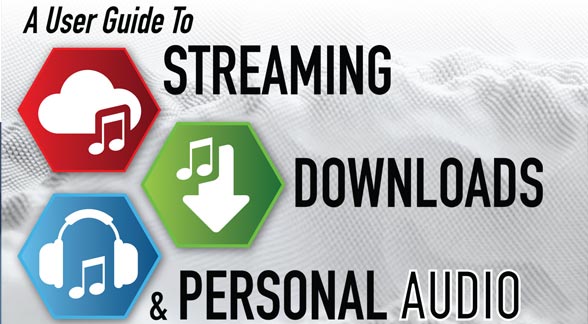
I studied MQA’s audio origami and frankly I still don’t see how it could possibly work based on the fact that it appears to violate the Shannon Nyquist criteria. That criteria says you can’t fit three pounds of signal in a one pound bag of time as audio origami appear to. It seems to be a universal fact that when audiophile doctrines clash with scientific facts the audiophiles go one way and the rest of the technical world goes another.
The inventor of it claims he has patents and I think he might but I couldn’t find anything from the patent office related to audio origami. I don’t know if he applied for one based on this idea but I didn’t see one published. If anyone has a link to a relevant patent for this I’d appreciate it if you could post a link. Lots of technical papers are published without critical peer review so they don’t necessarily prove the claims made for them.
whenever I see that something supports MQA, the first thing that comes to mind is to avoid that device. They clearly wasted money and are therefore charging more for an unnecessary option.